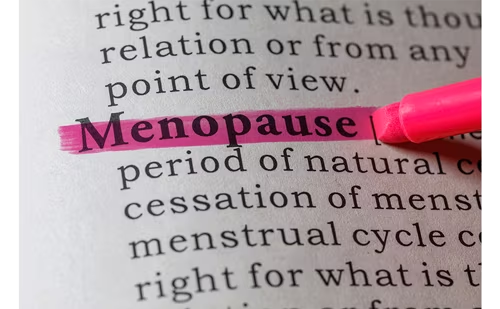Introduction
Introduction
Memory problems late in life are common and are often easy to recognize. Hypogonadism in older men is not as readily identified, but it is also frequently a part of aging. Androgens, such as testosterone, have important hormonal influences on the brain and may prevent and possibly treat cognitive loss, including age-associated memory loss, mild cognitive impairment (MCI), and perhaps even Alzheimer’s disease (AD).There is support from small, prospective clinical trials that suggest the role of testosterone in improving cognitive function in normal men as well as hypogonadal men with AD. This improvement in cognitive function is subtle and is often only measurable on specialized neuropsychological batteries such as those that measure the visual-spatial domain. Patients often report measurable memory improvement in both declarative and procedural domains after receiving testosterone replacement therapy.The rise of gonadotropins, follicle-stimulating hormones (FSHs), and luteinizing hormones (LHs), has been associated with AD.The clinical significance of therapeutic strategies directed to reduce these levels remains to be determined. Current evidence showing that dehydroepiandrosterone (DHEA) improves cognitive function is ambiguous.
Androgens and Cognition in Older Men
Most men over the age of 50 experience a decrease in androgen levels. This depletion is referred to as androgen decline in aging males (ADAM) or andropause. Although the term andropause is sometimes used by the popular press, it is a somewhat misleading representation of the syndrome in that, compared with the estrogen loss in menopausal women, the hormonal change in men is quite gradual and results in only a fractional decrease in androgen levels. As men age, there is a greater decline in free testosterone (FT) and bioavailable testosterone (BAT) compared with total testosterone (TT).As such, FT and BAT are better measures of androgenicity in older men. However, since these tests are more expensive and less readily available, FT results are still often the basis of diagnoses of ADAM.
There is wide variability in the range of decline of testosterone values deemed to be acceptable in men with advancing age. Testosterone levels decline by as much as 45% between the ages of 35 to 80, and a majority of men over 70 can be classified as being hypogonadal based on their testosterone values. Debate continues about the extent of decline in testosterone levels that can be attributed to ‘normal’ aging, as opposed to the effect of chronic diseases that affect the levels of BAT either directly or indirectly, as well as multiple medication uses that are more common in the older population.
Although neuroreceptor research has demonstrated the influence of testosterone on cognitive performance by either a direct effect on the androgen receptors or indirectly after conversion to estradiol, multiple small human studies have had inconsistent findings on the linkage between testosterone and cognitive function. Gouchie et al. found a non-linear relationship between testosterone concentrations and spatial ability in healthy older men. Wolf et al. implied in their study that endogenous sex steroids did not appear to be closely linked to better cognition in healthy men. Altered neuroendocrine regulation of cognition may predispose men to AD. With androgen replacement, men have been shown to have improved spatial cognition; this is likely to occur through the influence of testosterone on estrogen. In men, AD risk may be reduced by several factors, including antioxidants, moderate alcohol consumption, and exercise. The Honolulu Asia Aging Study examined 3,385 men; those who prophylactically consumed vitamin C and E exhibited an 88% reduction in AD risk. A gender difference in the prevalence and incidence of AD seems to exist.This gender difference may be a function of longevity, as women live seven years longer on average than their Western world male counterparts. It has therefore been assumed that AD occurs less frequently in men than women. However, a recent study argues that AD may be as common in men as in women when the data is corrected for age differences, though gender-specific AD risk factors cannot be excluded. Smoking in men has been shown to increase AD risk. In addition, HIV positive men who carry the ε4 allele of apolipoprotein E (APOE) have also been shown to have an increased AD risk.
Animal Studies
Studies have shown that castrated animals exhibit increased deterioration in learning and memory. Studies have also shown that sexually intact male dogs are significantly less likely to exhibit cognitive deficits compared with neutered dogs. It has been suggested that circulating testosterone in aging, sexually intact male dogs slowed the progression of cognitive impairment. Experiments in mice such as the senescence-accelerated mouse (SAMP8) also reveal age-related learning and memory deficits, particularly in the ability to perform inferential tasks. These memory deficits are associated with corresponding agerelated declines in testosterone levels.
The pathology of the brain of orchiectomized rats shows intracellular neurofibrillary tangle formation, a result of tau protein hyperphosphorylation, which is the major neuropathological hallmark of AD. It has been demonstrated that heat shock-induced hyperphosphorylation of tau protein in the brain of orchiectomized male rats can in fact be reduced by testosterone. Treatment with testosterone decreases the secretion of amyloid beta (Aβ) peptide from the cerebrocortical neurons of rats.Accumulating evidence indicates that changes in Aβ precedes tau hyperphosphorylation. Testosterone exerts its neuroprotective effects through receptor-mediated mechanisms.18 It stimulates increased SAPPα secretion, which also exhibits neurotropic properties.
Another mechanism whereby testosterone exerts its effects is by activating androgen receptors (ARs). ARs are found in abundance in AD sensitive brain regions, such as the cerebral cortex and hippocampus. Blockade of AR in mice expressing the major AD genetic risk factor, ε4 of apolipoprotein E (APOE ε4), has resulted in the development of prominent spatial learning and memory deficits. In contrast, the female apoE4 mice, which suffered from spatial learning and memory impairments, exhibited memory improvement in response to androgen treatment.







